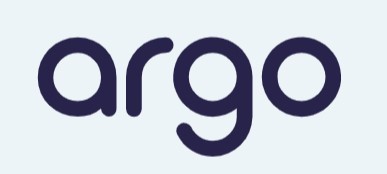
Continuous Deployment (CD) is an essential component to modern software development. Teams leverage CD to quickly accelerate their innovation and time-to-market, improve resiliency and reliability, and reduce risk while also improving their customers' experience. CD enables developers to detect issues from changes, resolve them, and deliver value to end-users in shorter durations. CD also empowers closing the feedback loop in an automated fashion, quickly, while ensuring faster and higher quality releases.
What is the importance of continuous deployment?
CD offers a fast and seamless process for companies to release high-quality solutions in the face of rapidly changing requirements and high market expectations. It is an optimal utilization of time due to the improved speed of development and bug fixes, which result in faster and higher quality releases. The reduced lead time in the cycle can lead to an earlier return on investments and increased customer satisfaction. It also significantly improves developer experience, leading to less turnover and burnout.
Outlined below are the top 5 best CD software of 2023 starting with:
#1. Armory Continuous Deployment-as-a-Service

Overview
Armory Continuous Deployment-as-a-Service (CD-as-a-Service) is a SaaS declarative CD solution that simplifies and orchestrates even the most complex multi-environment deployments, empowering development teams to solve problems and accelerate innovation and time-to-market.
Armory centralizes and orchestrates the workflows of development teams to enable safe and reliable deployment to multiple Kubernetes clusters through a secure Kubernetes agent architecture. It supports deploying to various environments with advanced progressive deployment strategies and flexible promotion constraints.
It also offers cross-environment visibility, integrates automated testing and security scanning, and ensures separation of duty through role-based approvals. Armory's CD software is SOC 2 certified and protected with end-to-end secret encryption.
Armory is passionate about nurturing the growth of the developer community at large. Founded in 2016, Armory dedicates its efforts to improving the developer experience by making CD achievable and effortless for all development teams. With Armory CD-as-a-Service teams can focus on building great code, rather than deploying it.
Features
Multi-Cluster Orchestration
Armory orchestrates deployments to maintain each environment's required steps and outcomes, no matter how many or complex those environments may be. With Armory, teams can deploy code to multiple environments, track where code has reached, and determine the next steps before proceeding to the following environment. Development teams can easily monitor the progress of deployments in all environments and initiate automatic approvals and rollbacks when needed.
Declarative Deployment
Declarative deployment is an automation-based strategy to scale modern software development. As opposed to imperative deployment, this strategy focuses on the outcome and not individual steps, empowering teams to focus on what they want to accomplish, not how to accomplish it. Declarative deployment is more efficient and leads to better outcomes.
Armory's declarative deployments are much more resilient to change due to their outcome-based configuration. Simply declare the targets and deployment strategy, and Armory will automatically configure the rest. This function leads to easier maintenance and a greater ability to handle changing requirements over time.
With Armory's declarative deployment, development teams can check the deployment file into a git repo, structured the way they want or need, to continue efficient collaboration and common best practices; support multiple versions of deployments at the same time; and leverage release and hotfix branches as needed - branches do not need a one-to-one relationship with Kubernetes clusters.
Advanced Progressive Deployment
Blue/green deployment is a strategy development teams can utilize to reduce downtime and risk by running two versions of an application simultaneously while remaining in control of the traffic between them. The blue environment will contain the app's most recent, stable version, while the green environment will contain deployed changes.
Having two environments allows development teams to run tests against a full copy of the production environment without exposing users to new versions or features of an application. When development teams detect issues in the green environment, they can roll back to the stable version without causing downtime that compromises the end-user experience.
Canary deployments are progressive deployments that gradually increase traffic to users while the system analyzes baseline performance metrics. If performance falls outside the acceptable range, a rollback is initiated, either manually or automatically. This allows development teams to improve stability and avoid service outages by continuously verifying changes as they are deployed, and not only in production, but in all environments.
With Armory, development teams can run fine-grained canary deployments on multiple services in lock-step and roll them back together. Additionally, teams can route the proper amount of traffic to new application versions regardless of application pod count, decreasing any impact to the customers' experience. With Armory's integrations and support for several service meshes development teams can fully control the traffic shaping anywhere from 1% to 100%.
Automated Rollbacks
Armory automatically executes a partial or complete rollback of a deployment to the last known working version to avoid or quickly recover from a service outage. Automatic rollbacks also apply to tightly coupled services that must be deployed and rolled back together.
Multi-tenant RBAC & Team Workspaces
Armory enables platform teams to create a tenant (or workspace) for each one of their development teams. This allows the isolation and separation of duties for each teams deployments, data, and processes. It's like they have Armory CD all to their own. All while the ability to manage roles and access centrally, from the main tenant organization.
Integrations
Armory can seamlessly integrate with GitHub, Datadog, New Relic, Prometheus, and much more, using asynchronous webhooks as a generic extensibility layer that enables calls to any API in any internet-accessible system - use a webhook to obtain a decision from an external process. Armory also supports trigger deployments from any continuous integration (CI) system by utilizing the command-line interface and machine-to-machine credentials.
For more information visit https://armory.io
#2. Weaveworks GitOps Enterprise

Overview
Weave GitOps Enterprise (WGE) is the main CD software of Weaveworks, the company that built and donated the powerful open source graduated CNCF project Flux. Founded in 2014, Weaveworks strives to make it simple and secure for application developers and Platform teams to deliver and manage Kubernetes applications at scale.
WGE aims to boost developer velocity, automate security and compliance, and make it possible for small operations or platform teams to support fleet-scale infrastructure with dozens or hundreds of development teams. The software is backed by 24/7 support and a wealth of Kubernetes knowledge and experience.
Features
Automating platform engineering and CD processes reduces costs, improves operational efficiency, and reduces human errors and misconfiguration. Weave GitOps Enterprise standardizes Kubernetes usage across environments and offers a catalog of tools and templates to streamline development and deployment.
By minimizing cognitive load and infrastructure complexities, developers can focus on building applications and deliver value faster while enjoying a better experience. Weave GitOps Enterprise empowers developer self-service by providing standardized workflows, automated governance, and a curated catalog of pre-configured resources.
Security and compliance are seamlessly integrated into the development and continuous deployment process in WGE. Best practices and compliance standards are enforced through Policy-as-Code and Infra-as-Code methodologies, mitigating risks and ensuring the trust of customers and regulatory bodies.
WGE enables businesses to scale development teams without the need for extensive Ops personnel increases. It provides a framework for managing multiple Kubernetes clusters, stacks, and resources, ensuring operability, efficiency, and cost optimization. This scalability increases business growth and agility.
For more information visit https://www.weave.works
#3. Argo CD

Overview
Argo CD is a GitOps Continuous Delivery tool that utilizes declarative statements for application delivery and lifecycle management. It adheres to the GitOps pattern of using Git repositories as the source of truth to define the desired application state.
Argo CD functions as a Kubernetes controller. Argo CD continuously monitors applications and compares their current state against the desired target state when deployed in their specified environments. It reports and visualizes the differences, allowing developers to manually or automatically synchronize the current state to the desired target state.
Features
Argo CD offers a real-time view of application activity. It can display the health status of application resources for developers to detect and resolve issues surrounding a deployed application. It can manage and deploy multiple clusters. It can also automatically deploy applications to specific target environments without human intervention.
Argo CD also features SSO integrations for existing platforms like OIDC, SAML 2.0, GitHub, GitLab, and more.
The continuous delivery tool also features webhook integration, enabling seamless communication between two applications and other GitOps practices. It also displays audit trails for application events and API calls, which promotes transparency among developers as it allows them to trace any changes made before the release of the application.
As an open-source project, it has made significant strides with a Net Promoter Score of 76 and a satisfaction rate of 93%, proving its reliability and efficiency as a tool that can simplify the deployment process to help organizations achieve their goals.
For more information visit https://argoproj.github.io/cd
#4. Harness CD

Overview
Harness CD is a modern software delivery platform that contains solutions for several phases of software delivery. It boosts the ability of businesses to move faster to meet the demands of their end-users while improving the performance and overall functionality of their applications.
Harness promises end-to-end visibility protection for the entire software delivery cycle. It has platform governance to enforce policies and customizable dashboards, supporting various platforms and technologies to centralize all operations for faster deployment.
Features
Harness offers automated deployment strategies such as canary, blue/green, and rolling deployments. These three deployment strategies can mitigate downtime risk by gradually releasing changes across different environments, allowing for easier rollbacks.
The CD software also offers visibility and control at every deployment stage. It features an AI/ML-driven verification capability that validates the deployment quality. This automated feature reduces risks and provides a safety net when a code is deployed to production.
Harness contains more pipeline features like scheduling, intelligent triggers, and a visual pipeline builder, allowing developers to manage their pipelines as they would manage their code. It also features single-sign-on, two-factor authentication, IP address allowlist management, and more to minimize business risk and control access of specific users.
For more information visit https://www.harness.io
#5. Octopus Deploy

Overview
Octopus Deploy offers reliable and risk-free deployments with rollback capabilities, utilizing the same deployment process across all environments. It simplifies the full deployment journey to ensure faster release of applications.
Features
Octopus Deploy helps teams to ship code faster as it breaks down development and operation silos. It integrates with many CI servers and offers simple configuration among environments and variables, enabling teams to deploy according to their preference easily and confidently.
It also displays real-time information detailing the project's name and the development date, test, and production date. A check mark signifies the completion of the cycle, while a throbber (loading icon/circle) implies the project is still ongoing. It even displays the version of the application, which guarantees full transparency.
Octopus Deploy also features runbook automation, which helps teams automate the recovery processes and execute them against infrastructure. It also has a central location where couples can manage, control, audit, or schedule their operations to ensure an application's performance stability.
Featuring configuration-as-code, Octopus Deploy is complemented by its text editor, which aids in modifying code to fast-track the deployment across multiple environments. With its user-friendly interface and process consistency, Octopus Deploy can result in increased productivity, which eventually leads to the release of income-generating services.
For more information visit https://octopus.com
Conclusion
Choosing the best software for CD requires evaluating the product capability, ease of use, and modernized approach to automating deployments. Each of the top CD software offer unique selling points that developers can leverage, like the AI/ML features of Harness CD or the declarative multi-environment specialization of Armory. Assess properly to determine which fits best to achieve your company's long-term plans and bottom line.




